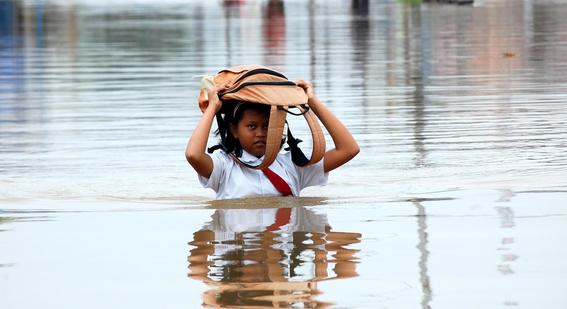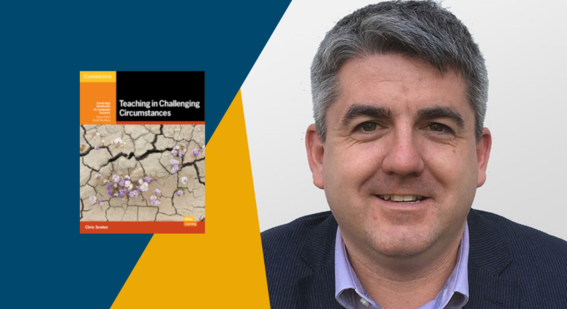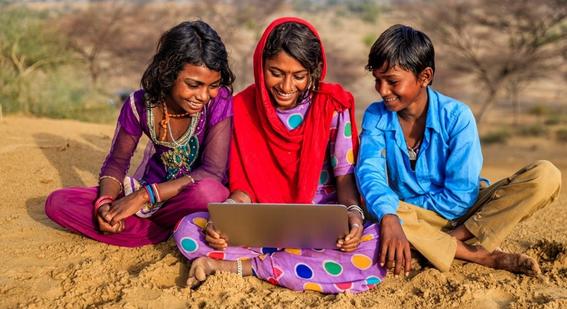Confronting Ukraine’s education crisis
Ukraine’s 7.5 million children face the most extreme disruption to their studies. Since the start of the war, an average of 22 schools a day have come under attack. This crisis of the classroom - and how the international community responds - will affect peacebuilding, reconstruction and development for decades to come.

If we are to succeed, businesses, governments and donors must relentlessly focus on details: from textbooks and teacher support to long-term curriculum construction.
In some ways, the suffering of Ukrainians is sadly unexceptional: about 75 million children have their education interrupted each year because of conflict, emergency and disaster. In 2018 about 31 million children were refugees, asylum seekers or internally displaced. This creates a tragic wealth of data points that can inform more effective educational interventions.
We know that education itself reduces conflict. According to a 2016 report involving 120 countries over 30 years, nations were less likely to experience violent conflict if their populations had higher levels of education.
Given this, it is tempting to simply throw resources at education in a crisis and worry about the oversight later. That would be wrongheaded, as past failures show.
United States-funded 1980s textbooks were still hampering children’s development in Afghanistan and Pakistan within the last decade. These anti-Soviet learning materials did not simply teach basic numeracy and literacy; they did so with images of guns, bullets, mines, soldiers and a smattering of jihadist propaganda. Decades later, when the US sought to modernise the Afghan education system, such textbooks were still part of the Taliban’s curriculum.
John Maynard Keynes had a point when he lamented “madmen in authority… distilling their frenzy from some academic scribbler of a few years back.” Textbooks are profoundly influential and deserving of proper scrutiny.
Well-constructed, edited, designed and distributed textbooks are essential, especially for learners living through conflict. The values they promote matter throughout the curriculum - not just for lessons that explicitly tackle conflict resolution.
Cambridge and Unicef are taking this holistic approach as we develop an education programme for Rohingya refugee children in Bangladesh. We trialled embedding conflict resolution into learning materials for South Sudan in 2017. Interpersonal skills and values of peacebuilding can be nurtured in mathematics and science as much as in personal and social education.
To a generation that has only known violence, displacement or civil war, these are not abstract ideas, but serious challenges to their mindset through ordinary products like textbooks. Lesson plans and learning materials can plant the seeds of reintegration: both into a stable society and into a future national education system.
Tasks for pupils in primary mathematics or science can be crafted to encourage mediated collaboration as children solve problems. Teachers draw on case studies that support critical thinking about their wider community, and issues like environmental sustainability, cultural understanding or conflict resolution, as part of a scientific curriculum.
The fastest and most effective way to introduce peace building to an education system is to make it a prerequisite for funding. Policymakers and donors should insist that the cross-cutting theme of conflict resolution – alongside other core values like gender equality and sustainability – is built into proposals for new education programmes.
Ukrainian children, whether in Kyiv, Mariupol, Warsaw or London, should access the same opportunities to continue a cohesive, quality learning journey. Displacement means trauma, chaos and uncertainty for learners and teachers. Access to schooling and resources is disrupted, resulting in an education reduced to fragmented and disjointed moments. Even when the quality of the learning experience can be maintained, the disconnect between past and future opportunities to learn undermines the coherence of curricula.
School leaders in the affected regions tell us that their students - whether in Ukraine or abroad - need a smooth transition into other education systems, and access to quality materials, including textbooks, online resources and the high-stakes examinations that allow for progression.
My colleagues are working to assist this transition by mapping the Ukrainian curriculum to the education systems of countries receiving refugees, starting with mathematics. These maps can be provided to teachers to help them understand where their new Ukrainian students may be on their learning journeys, compared to their usual class cohorts, and where there may be differences in sequencing. Our international exam board is working with schools throughout Eastern Europe to support progression and assessment for displaced students and teachers. Cambridge English is creating online communities for Ukrainian teachers, with daily support for those teaching in challenging circumstances.
Cambridge is one cog in an extraordinary multinational cross-industry effort. That’s why the plight of Ukraine’s learners, and how the publishing industry can help, was top of the agenda during April’s London Book Fair.
Many publishers will be working to ensure Ukrainian, Russian and other academics and authors can continue to collaborate and freely share their discoveries and ideas, even as we cease business with the Russian state.
We can draw inspiration from the informal ‘science diplomacy’ that permeates places like CERN, where particle physicists, including Russians and Ukrainians, Israelis and Palestinians, Americans and Chinese, work together to further our understanding of the origins of the universe – despite changing governmental relations and formal partnerships.
Throughout this crisis, we must not lose sight of a post-conflict Ukraine. Today’s educational interventions will be felt long after the last Russian landmine has been defused.
Jane Mann is Managing Director of Cambridge Partnership for Education at Cambridge University Press & Assessment




